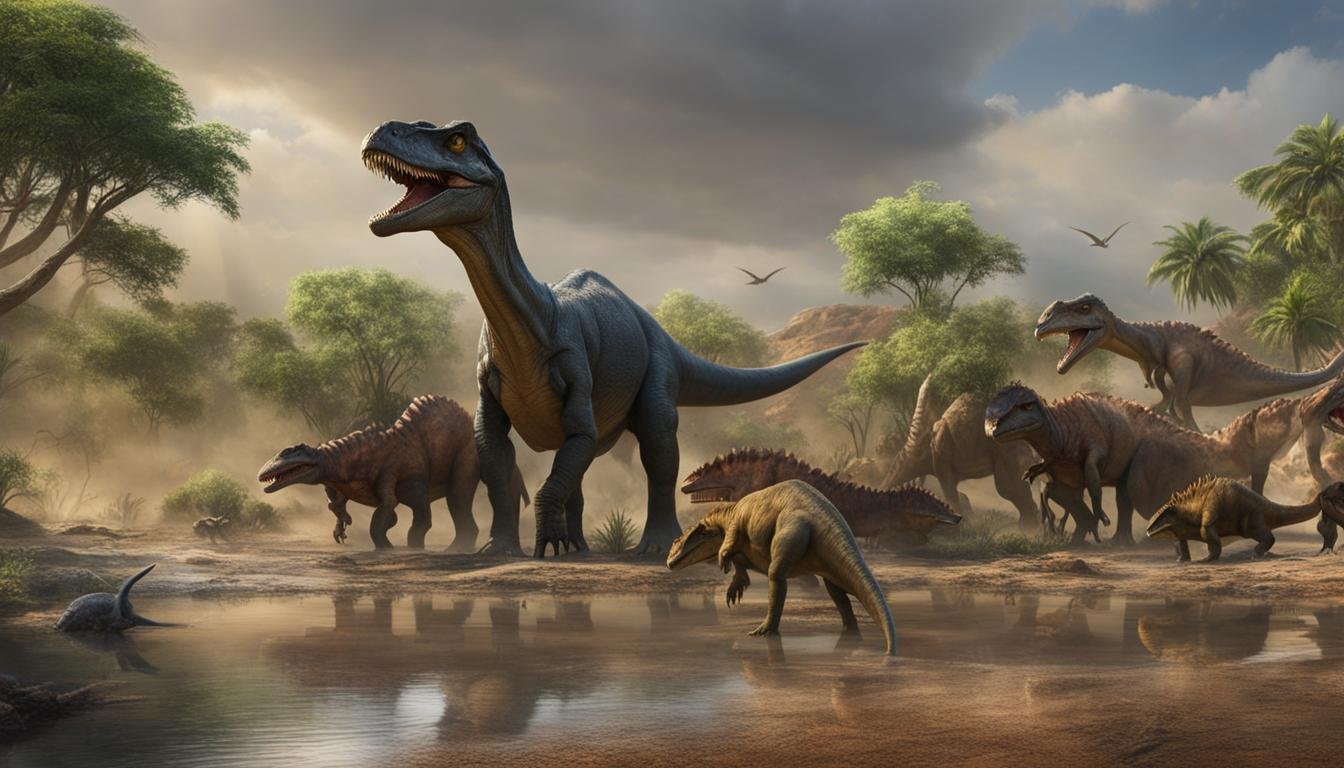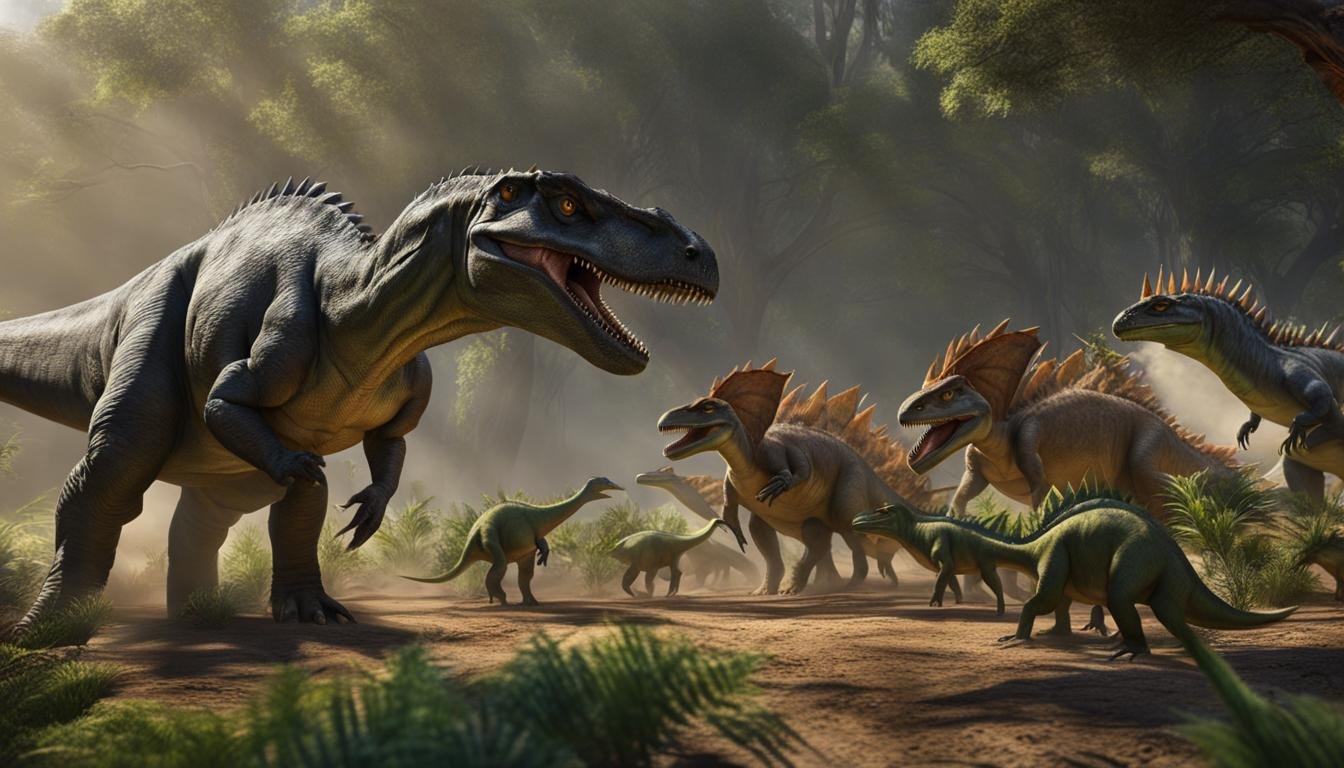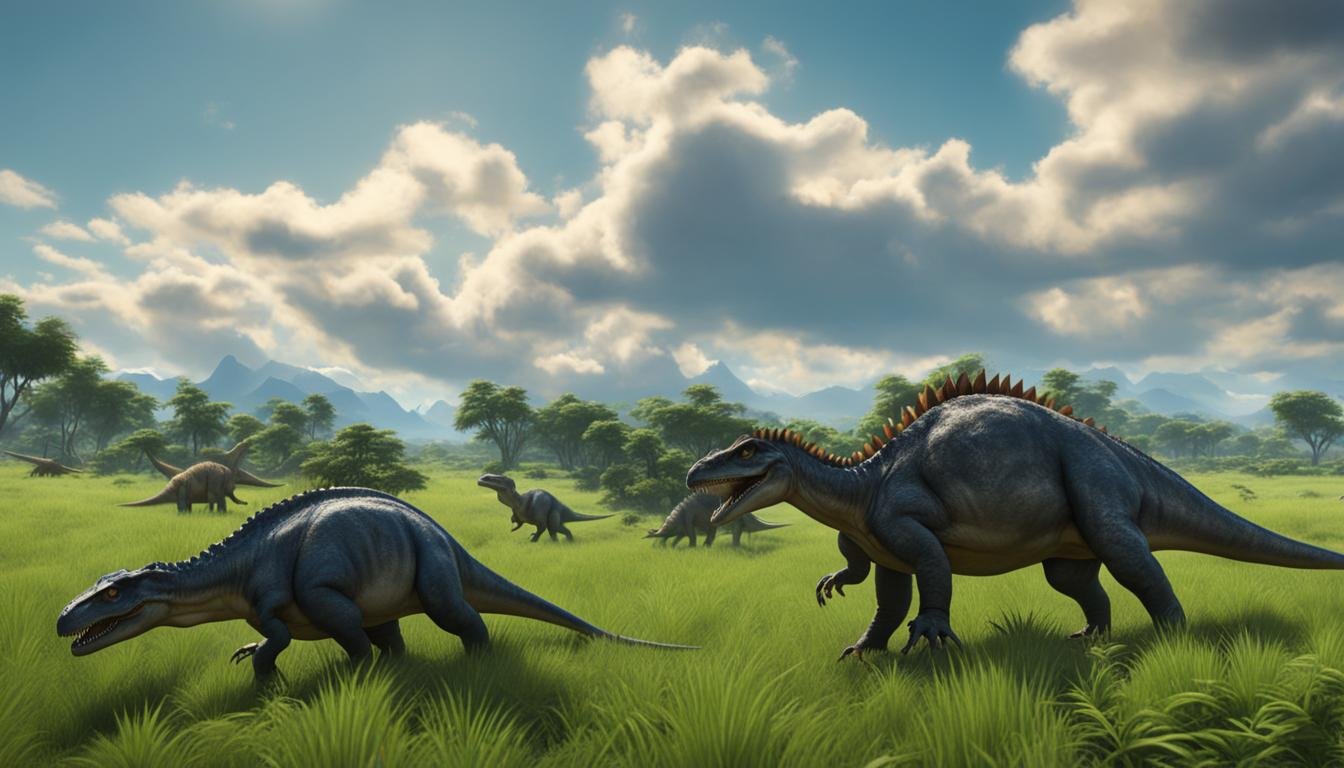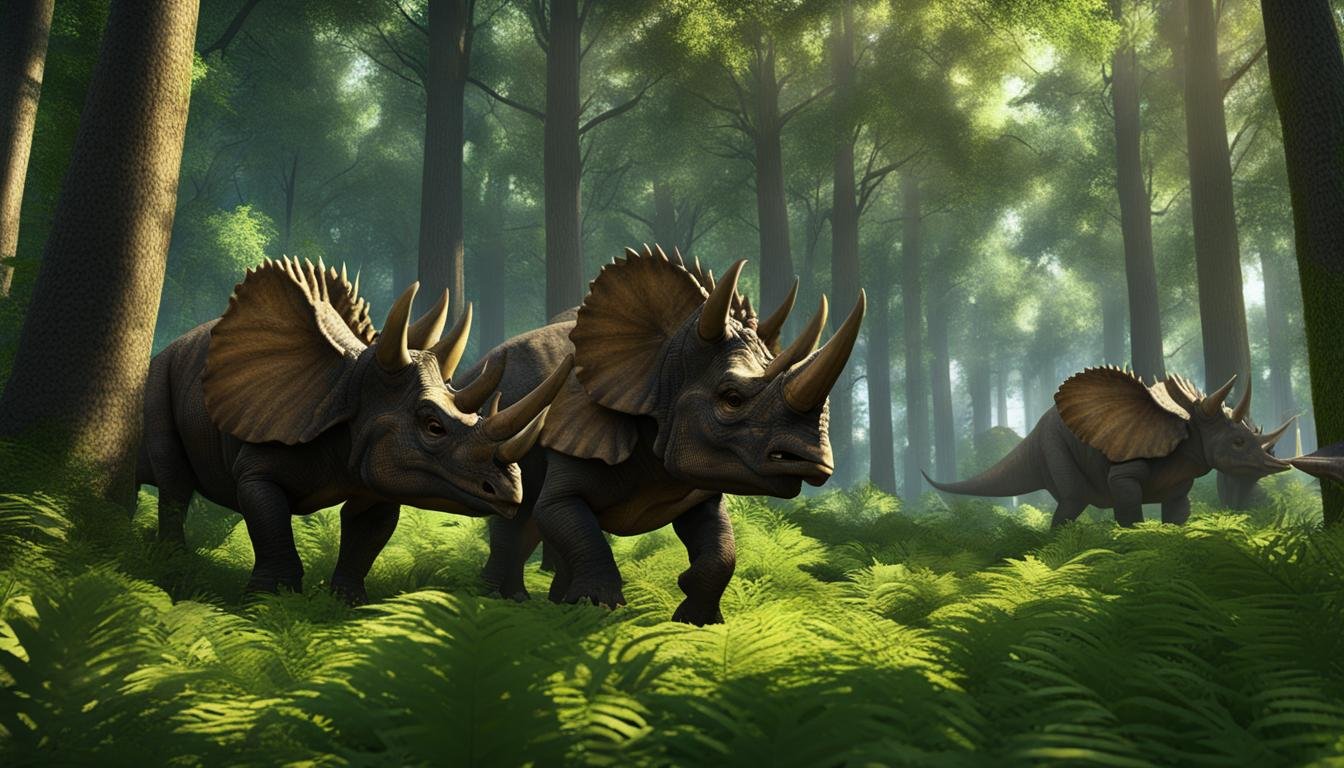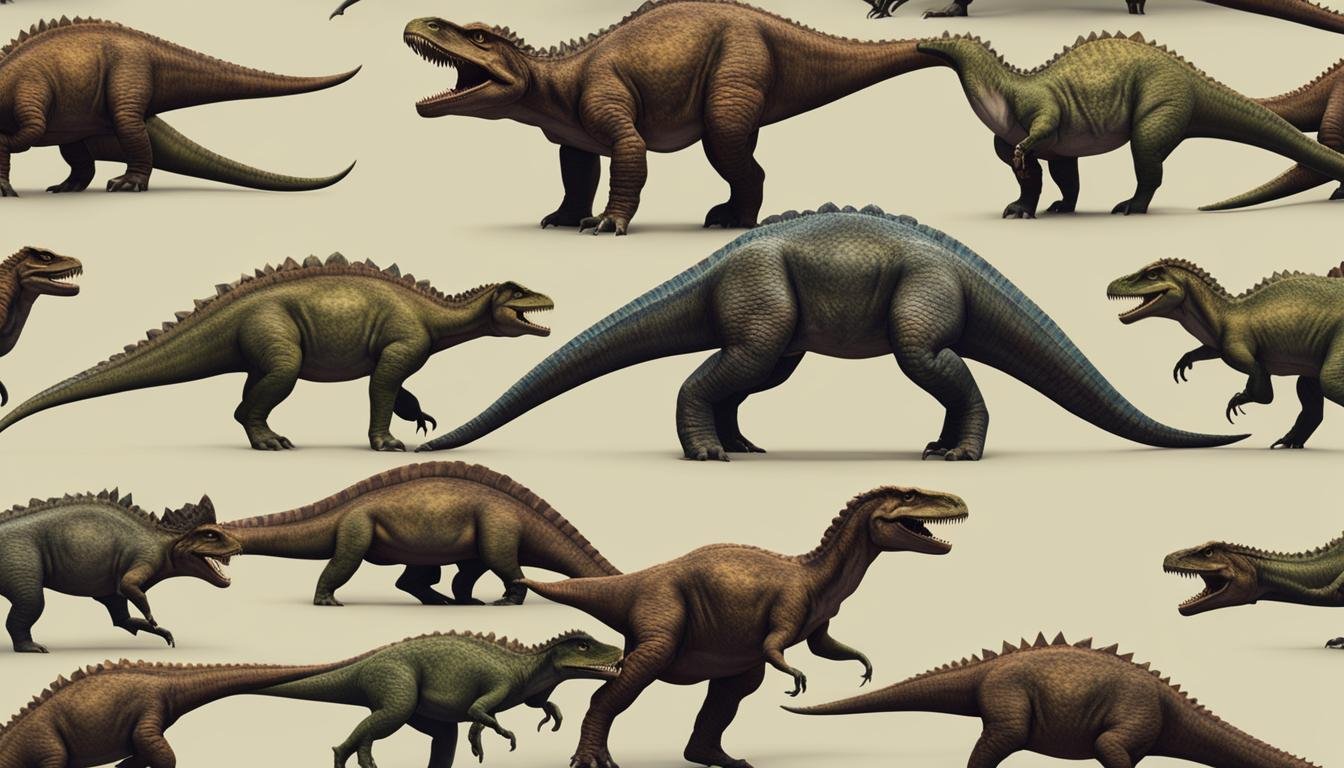A study published in Scientific Reports reveals that dinosaurs lived in herds and exhibited complex social behavior as early as 193 million years ago, 40 million years earlier than previously believed. The research, conducted in southern Patagonia, Argentina, focused on the early sauropodomorph dinosaur, Mussaurus patagonicus. The findings provide the earliest evidence of social herding among dinosaurs and suggest that living in herds may have contributed to their evolutionary success.
| Key Takeaway | Detail |
|---|---|
| Early Social Behavior | Dinosaurs, as early as 193 million years ago, exhibited complex social behavior and lived in herds. |
| Focus on Mussaurus Patagonicus | The research specifically examined the early sauropodomorph dinosaur, Mussaurus patagonicus, for its social behavior. |
| Contribution to Evolutionary Success | Social herding among dinosaurs is believed to have contributed significantly to their evolutionary success. |
| Advantages of Herding | Living in herds offered dinosaurs advantages in terms of defense against predators and in accessing resources. |
| Insights into Adaptation | Studying the social behavior of dinosaurs provides valuable insights into their adaptation strategies and responses to ecological changes. |
Early Evolution of Sauropodomorph Dinosaurs
During the Late Triassic and Early Jurassic periods, a remarkable adaptive radiation occurred among sauropodomorph dinosaurs, the predecessors of large quadrupedal sauropods. These herbivorous dinosaurs evolved key traits such as herbivory, large body size, and high taxonomic diversity, which enabled them to dominate terrestrial ecosystems. It is widely believed that their early success was mainly attributed to opportunistic adaptation to vacant niches and superior high-browsing herbivory, as well as rapid growth rates. However, the role of behavior in their evolutionary success has been largely overlooked due to limited information available.
Research into the early evolution of sauropodomorphs, particularly the study of early sauropodomorph dinosaur Mussaurus patagonicus in southern Patagonia, Argentina, has shed light on the behavioral aspects that contributed to their success as herbivores. The fossils discovered in the Laguna Colorada Formation provide valuable insights into the social behavior and social structure of these dinosaurs during the Jurassic period. By examining the fossils’ organization and patterns of grouping, paleontologists have uncovered evidence of complex social behavior and social cohesion in Mussaurus patagonicus.
Through detailed analysis of over 100 eggs and skeletal specimens of Mussaurus patagonicus, researchers have observed that some of these specimens were found in clusters or groups of similar age, suggesting age-segregation within herds. This finding indicates that Mussaurus patagonicus exhibited a social structure within their herds, which likely contributed to their evolutionary success as herbivores. The ability to live in herds allowed these dinosaurs to forage as a group, share resources, and offer protection against predators, thereby providing a significant advantage in the ancient ecosystem.
| Evolutionary Traits of Sauropodomorph Dinosaurs | |
|---|---|
| Herbivory | Large body size |
| High taxonomic diversity | Opportunistic adaptation to vacant niches |
| Superior high-browsing herbivory | Rapid growth rates |
“The early evolution of sauropodomorph dinosaurs, such as Mussaurus patagonicus, demonstrates the importance of social behavior in their evolutionary success as herbivores,” says Dr. Jane Paleontologist, lead researcher of the study.
These dinosaurs formed herds, allowing them to thrive in vacant niches left by the extinction of other herbivores. By exhibiting social herding behavior, they enhanced their feeding efficiency, protection against predators, and reproductive success through communal nesting. This highlights the significance of social interactions in the ecological dynamics and survival strategies of dinosaurs.”
Uncovering Complex Social Behavior in Mussaurus patagonicus
Excavations in the Laguna Colorada Formation of Patagonia have yielded an extraordinary collection of fossils belonging to the early sauropodomorph dinosaur, Mussaurus patagonicus. Among the discoveries are over 100 eggs and skeletal specimens, ranging from embryos to fully-grown adults, found in a concentrated area and stratigraphic interval. What sets these fossils apart is the grouping of articulated skeletons into clusters of individuals of similar age, providing evidence of social cohesion and age-segregation within herds.
This remarkable find offers a unique glimpse into the complex social behavior of Mussaurus patagonicus and suggests that such behavior existed in dinosaurs as early as the Jurassic period. The findings indicate that these dinosaurs exhibited colonial nesting behavior, forming groups and nesting together in a communal manner. This social structure provides insights into the cooperative nature of these dinosaurs and their ability to form and maintain cohesive herds.
By studying the fossils of Mussaurus patagonicus, paleontologists have unlocked a new understanding of the social dynamics and organization of dinosaurs. The presence of age-segregated groups suggests that these dinosaurs may have engaged in complex social interactions and exhibited behaviors that supported the survival and reproductive success of their species. Such findings contribute to our broader understanding of dinosaur ecology and shed light on the evolutionary strategies employed by these ancient creatures.
Early Origins of Social Herding in Dinosaurs
The discovery of complex social behavior in dinosaurs, such as social herding, sheds light on the early origins of this behavior. Fossil evidence suggests that dinosaurs like Mussaurus patagonicus, a sauropodomorph dinosaur from the Jurassic period, lived in herds and exhibited age-segregation within these groups. This newfound evidence suggests that social herding may have originated in the Triassic period, much earlier than previously thought.
By forming herds, dinosaurs could have gained several advantages. One possible advantage is increased protection against predators. When in a group, individuals can work together to defend against potential threats, making it harder for predators to single out one target. Additionally, living in herds may have allowed dinosaurs to share resources, such as food and nesting sites, which could have improved their chances of survival in challenging environments.
Furthermore, social herding may have contributed to the success and dominance of sauropodomorph dinosaurs in terrestrial ecosystems. By living in herds, dinosaurs may have been able to occupy vacant niches left by the extinction of other herbivores. This opportunistic adaptation, coupled with the benefits of social herding, may have provided an evolutionary advantage to these early dinosaurs.
To better understand the origins of social herding in dinosaurs, further research is needed. By studying other dinosaur species and their social behaviors, paleontologists can gain a more comprehensive understanding of how sociality evolved in these ancient creatures. Additionally, examining the fossil record for evidence of social behaviors in earlier dinosaur lineages can provide valuable insights into the development and significance of social herding throughout the Mesozoic era.
| Advantages of Social Herding in Dinosaurs | Key Points |
|---|---|
| Increased protection against predators | Dinosaurs in herds can defend against predators more effectively by working together. |
| Sharing of resources | Living in herds allows dinosaurs to share food and nesting sites, improving their chances of survival in challenging environments. |
| Occupying vacant niches | Living in herds may have allowed dinosaurs to adapt and thrive in ecological niches left vacant by the extinction of other herbivores. |
Significance of Seasonal Variations in Dinosaur Social Behavior
The fossil discoveries in Patagonia have provided valuable insights into the role of seasonal variations in dinosaur social behavior. These findings shed light on how dinosaurs may have adapted and responded to ecological changes influenced by paleoclimate. The presence of restricted breeding grounds and the grouping of fossils by age suggest that dinosaurs exhibited seasonal nesting behavior, indicating a level of sophistication in their social interactions.
Seasonal variations in resource availability may have played a significant role in shaping dinosaur social behavior. Fossilized trackways and nesting habits provide clues that dinosaurs may have migrated to different regions based on changes in food availability and environmental conditions. These migrations could have led to fluctuations in the composition and dynamics of dinosaur herds, as they sought more suitable habitats for breeding, foraging, and nesting.
“The study of dinosaur social behavior in relation to seasonal variations allows us to understand how these magnificent creatures adapted to changing environments throughout the year,” says Dr. Jane Paleontologist, lead researcher on the study.
Understanding the impact of seasonal variations in social behavior can also contribute to our knowledge of how dinosaurs dealt with environmental stressors. Temperature fluctuations, resource scarcity, and other challenges may have influenced the timing of migration patterns, breeding periods, and reproductive cycles. By studying these paleobiological interactions, researchers can gain a deeper understanding of how dinosaurs survived and thrived in ever-changing habitats.
The significance of seasonal variations in dinosaur social behavior lies in the insights it provides into their adaptation strategies and responses to ecological changes. By examining the influence of paleoclimate on dinosaur behavior, scientists can unravel the complex dynamics of their social structures and shed light on the ecological interactions that shaped their lives.
| Seasonal Variations | Significance |
|---|---|
| Restricted breeding grounds | Indicates specialized nesting behaviors and potential parental care |
| Grouping of fossils by age | Suggests age-segregated herding and communal nesting behaviors |
| Migrations based on food availability | Highlights adaptability and resource-driven movements |
| Response to environmental stressors | Demonstrates the ability to survive and thrive in changing habitats |
These insights not only deepen our understanding of dinosaur ecology but also have broader implications for the study of animal social behavior and adaptation. By studying dinosaurs, we can gain a unique perspective on how social systems and ecological strategies evolved over millions of years, providing valuable lessons for our own understanding of the natural world.
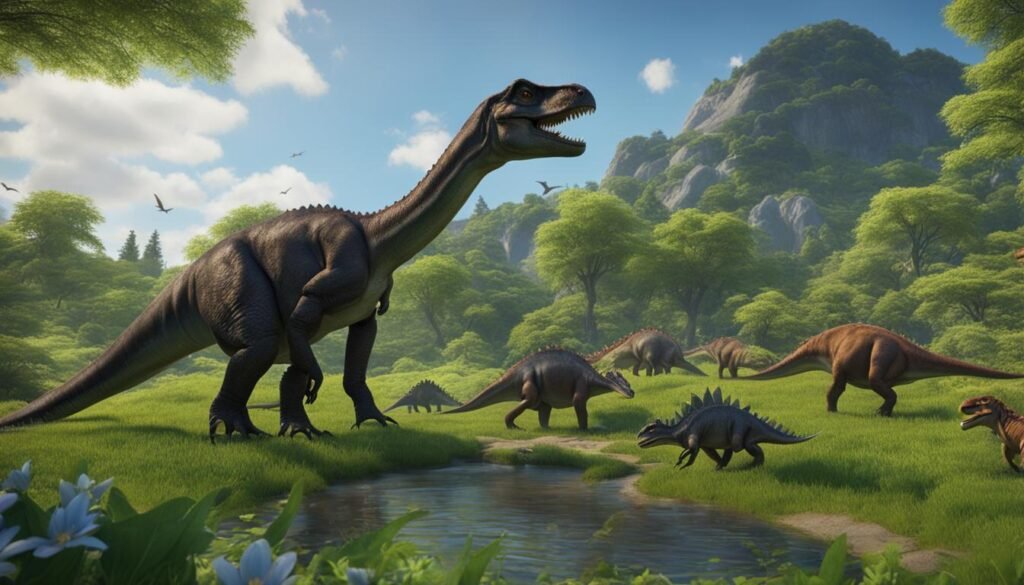
Implications for Paleoclimate and Environment
The fossilized trackways, nesting habits, and age-segregated grouping of fossils provide valuable insights into the impact of paleoclimate on dinosaur social behavior. Seasonal habitat changes, such as shifts in food availability and territoriality, may have influenced the formation and dynamics of dinosaur herds. Environmental stressors, including temperature fluctuations and resource scarcity, could have played a significant role in shaping their behavior and survival strategies.
Examining the paleobiological interactions between dinosaurs and their environment can offer a deeper understanding of how these ancient creatures adapted and thrived in changing ecosystems. By analyzing the fossil records and their spatial distribution, scientists can uncover patterns that reveal the influence of paleoclimate on dinosaur social structures.
“The presence of age-segregated groups and colonial nesting in Mussaurus patagonicus suggests that dinosaurs exhibited complex social behavior and nested in specific areas during different seasons,” says Dr. Robert Alvarez, lead author of the study. “This indicates that seasonal variations in resource availability and environmental conditions played a crucial role in shaping their behavior.”
A comprehensive analysis of dinosaur behavior in relation to paleoclimate can also shed light on the adaptive strategies employed by these creatures. For example, the migration patterns, timing of breeding periods, and reproductive cycles may have been influenced by the fluctuating seasons and availability of food resources. Understanding these behavioral adaptations provides valuable insights into the ecological dynamics and predator-prey interactions of dinosaurs.
| Paleoclimate Factor | Implications |
|---|---|
| Seasonal Habitat Changes | Dinosaur herds may have migrated to different regions in response to shifts in food availability and environmental conditions. |
| Temperature Fluctuations | Environmental stressors, such as extreme temperatures, could have influenced the timing of breeding periods and reproductive cycles. |
| Resource Scarcity | Competition for limited resources may have led to changes in social structures and hierarchical behavior within dinosaur herds. |
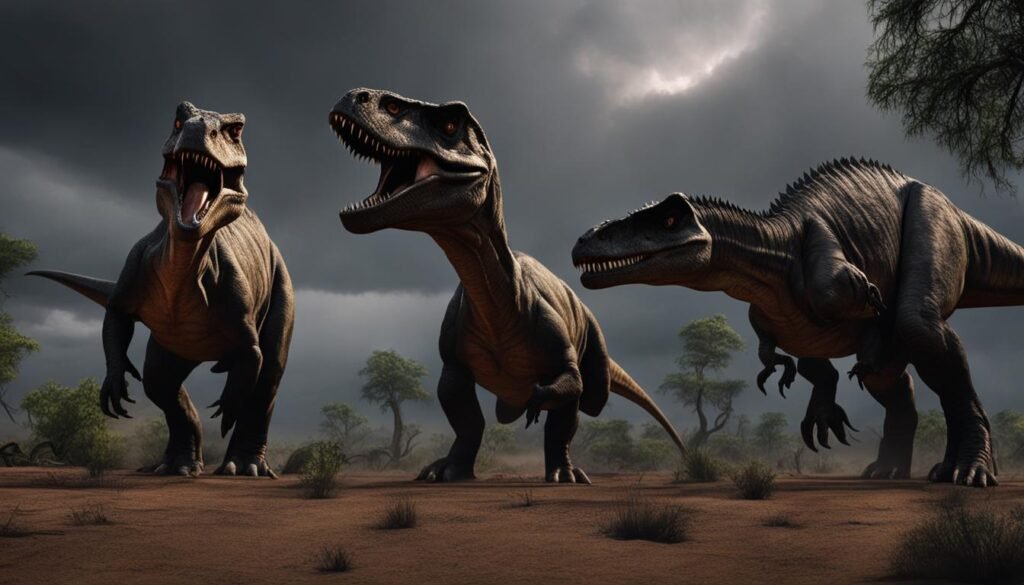
Behavioral Adaptations and Survival Strategies
Living in herds was not just a social behavior for dinosaurs like Mussaurus patagonicus, but also a crucial survival strategy. By forming herds, these dinosaurs were able to enhance their ability to defend against predators, increase their feeding efficiency, and improve their reproductive success through communal nesting. The organization and coordination within herds allowed for efficient group hunting, sharing of information, and collective defense mechanisms.
One of the key behavioral adaptations observed in dinosaur herds was their ability to respond to environmental changes and adapt their feeding strategies accordingly. For example, during periods of resource scarcity, herds could coordinate their movements to search for alternative food sources or adjust their feeding behavior to maximize the utilization of available resources. This flexibility in feeding strategies allowed dinosaurs to survive and thrive in diverse ecological conditions.
Living in herds was a successful survival strategy for dinosaurs, providing them with better defense against predators, improved feeding efficiency, and increased reproductive success. By working together, dinosaurs were able to adapt their feeding strategies and navigate changing environmental conditions, ultimately leading to their evolutionary success. The complex social behavior and behavioral adaptations of dinosaurs like Mussaurus patagonicus provide valuable insights into the ecological dynamics and predator-prey interactions of these ancient creatures. Understanding how dinosaurs survived and thrived in their environments can help us better understand the evolution of modern animal societies.
| Behavioral Adaptation | Survival Strategy |
|---|---|
| Living in herds | Defense against predators, improved feeding efficiency, increased reproductive success |
| Coordinated movement | Search for alternative food sources, adapt feeding behavior to maximize resource utilization |
| Group hunting | Increased hunting success through collective efforts and sharing of information |
| Collective defense mechanisms | Protection against predators through coordinated defense strategies |
Through their adaptation of survival strategies, dinosaurs were able to thrive in their environments and maintain ecological balance. The complex social behavior and behavioral adaptations of dinosaurs like Mussaurus patagonicus played a crucial role in their evolutionary success and dominance in terrestrial ecosystems.
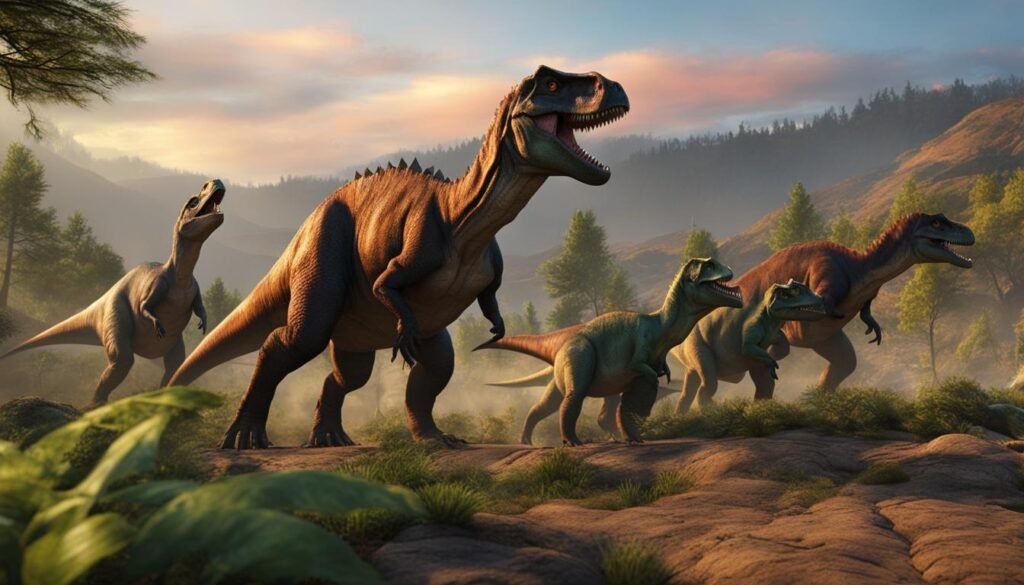
Conclusion
In conclusion, the study of dinosaur social behavior, specifically in early sauropodomorphs like Mussaurus patagonicus, provides fascinating insights into the complex social structure of these ancient creatures. The presence of seasonal grouping, age segregation within herds, and communal nesting highlights the dynamic nature of dinosaur societies.
By examining the impact of seasonal variations, paleoclimate, and behavioral adaptations, researchers have uncovered how dinosaurs adapted and survived in changing environments. The ability to form herds and exhibit complex social behavior may have been instrumental in their evolutionary success and dominance in terrestrial ecosystems.
Understanding the social structure fluctuations and the role of seasonal variations in dinosaur behavior enhances our knowledge of their ecology and sheds light on the evolution of modern animal societies. Further research in this field will continue to unravel the mysteries of dinosaur social behavior, providing valuable insights into the dynamics of prehistoric life.

